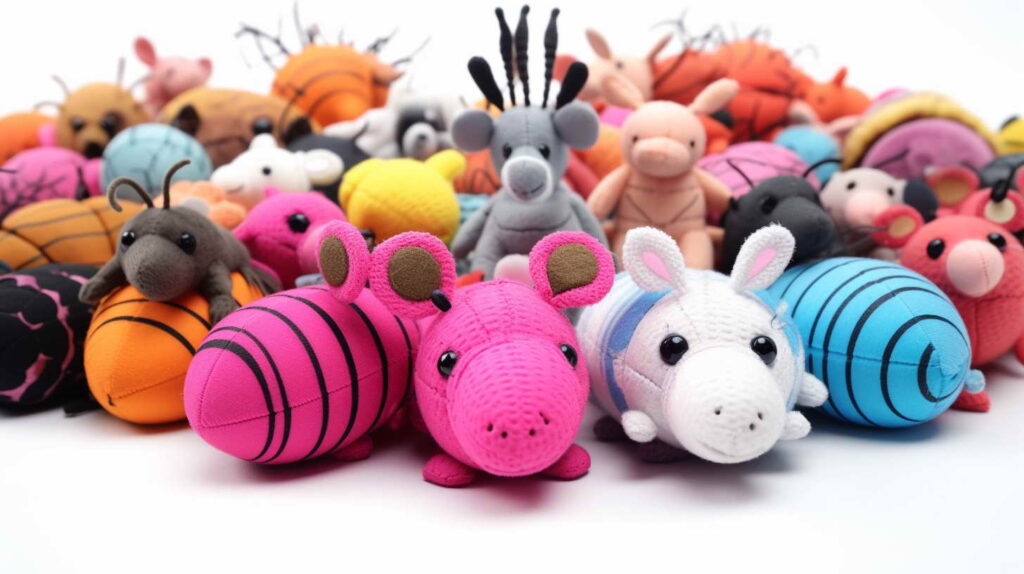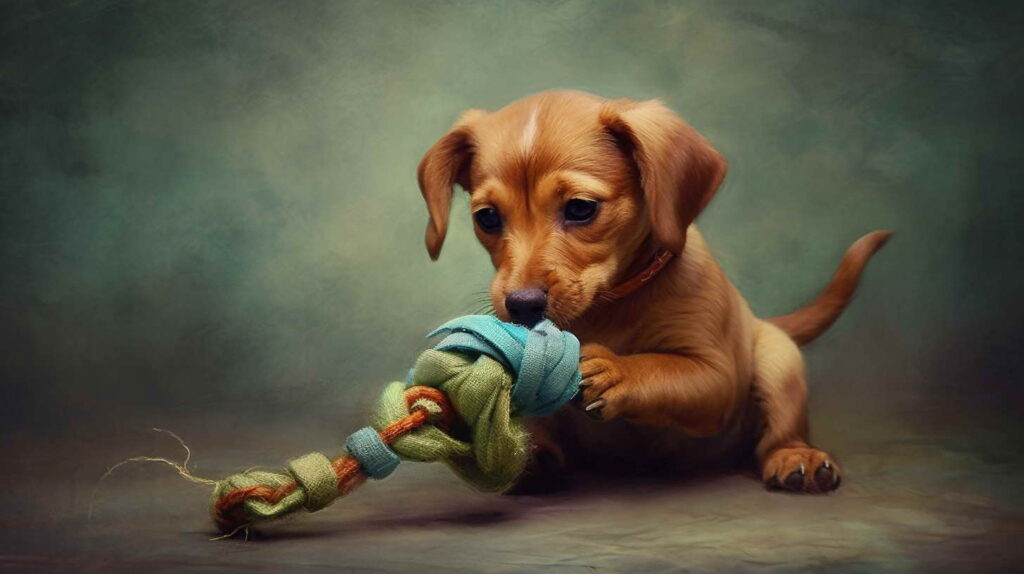Introduction: Pet Toys and Entertainment
PETSIDI – Pets, like their human companions, require mental and physical stimulation. As caretakers for domesticated animals that largely live indoors, we must provide outlets for their instinctual behaviors. Toys and activities focused on pets’ natural hunting, exploring, chewing, and problem-solving impulses are key to their well-being. This applies to common household pets like dogs, cats, small mammals, birds, reptiles, amphibians, fish, and even some invertebrates.
What entertainment do our furry, feathered, scaled, and exoskeletoned friends enjoy? Let’s dive in to better understand their needs and how we can meet them as responsible pet parents. I invite you, dear reader, to reflect on your own pets and their favored playthings as we explore this essential aspect of animal caregiving.
Why Playtime Matters
Wild animals spend large portions of their waking hours interacting with their environments. They forage, hunt, patrol territories, practice survival skills, interact with members of their own and other species, and engage in mating rituals. Even predators that appear lazy to our human sensibilities are often conserving energy between intense bursts of activity.
Domestication exchanges some behaviors to secure steady food, shelter, and healthcare from humans. But pets retain deeply ingrained drives even if they live mostly tame, indoor lives. Lack of mental and physical stimulation takes a toll, leading to boredom, frustration, stress, anxiety, and destructive tendencies. Ever come home to find shreds of tp or couch stuffing everywhere? Your pet was meeting their own stimulation needs, but not in the way you’d prefer! Providing appropriate outlets for natural behaviors benefits you and your pet.
Play also builds bonds between pets and human guardians, reinforcing affection and teamwork. Interactive play strengthens relationships within multi-pet households. Whether you own one critter or several, entertainment enriches their quality of life…and yours!
Let’s survey options tailored to popular pet species’ activity requirements and preferences.
Toys for High-Energy Dogs
Our canine companions originate from highly social, wide-ranging hunters like wolves. Modern breeds retain strong instincts to chase prey, chew, play-fight, solve puzzles, learn commands, and closely bond with “packmates” including humans. Energetic pups require 30-60 minutes of rigorous activity most days to stay fit and prevent behavior issues. Less active senior or small breed dogs still need mental stimulation and quality time with their beloved humans. Matching activities to your dog’s age, size, and temperament ensure healthy development.
Fetch fanatics will eagerly chase balls, discs, ropes, sticks (no splinters!), and other graspable objects. Launching throw toys allows them to dash at top speed while practicing capture techniques. This satisfies prey drive: hunting, racing after, seizing, subduing, and carrying an “item of interest” gives dogs great fulfillment. Pay close attention to avoid overexertion.
Tug-of-war and wrestling are natural social behaviors for establishing hierarchy and bonding. Your pooch will happily grapple with tug ropes, shake flirt poles, or innocuously mouth your hand or arm while play-fighting. Set rules like “no roughness” and stop when you sense loss of control. Reward gentle mouthing to reinforce desirable behavior.
Puzzle toys filled with hidden treats make pups work for their kibble, stimulating minds and problem-solving skills. Food puzzles, snuffle mats, hollow rubber toys, and more slow down rapid eaters. Dispensing toys reduces boredom and anxiety when alone. Rotate different puzzles to prevent loss of challenge. Advanced options require flipping latches, sliding doors, lifting flaps, pulling ropes, or spinning rollers to access the grub!
What about chew toys? Dogs teethe for months as puppies, then gnaw to manage stress or boredom forever after. Provide acceptable, durable alternatives to rugs, shoes, table legs, etc! Aggressive chewers need tough treats like compressed rawhide-free bones, and rubber or nylon toys. Supervised softer options include stuffed/squeaky toys, bully sticks, tendons, raw bones with meat scraps, or frozen carrots. Monitor to avoid choking hazards or intestinal blockages.

Toys and Activities for Cunning Cats
Feline friends lead more solitary lives than dogs overall, yet still thrive when provided appropriate entertainment. Understanding subtle cat behaviors allows better caregiving. Despite seeming aloof, most crave affectionate relationships with humans and compatible animal friends. We must offer appealing outlets for their smart, stealthy natures!
Natural hunting obsession means cats love chasing and pouncing things that move suddenly, erratically or make sounds. Store-bought choices: feather toys, wands, balls in circular tracks, treat balls/eggs, motorized bugs or mice they “catch”. Many homemade toys work too: paper bags, milk rings, aluminum foil balls, or string pulled along the floor. Try scattering catnip or treats to discover! The active play taps into hunting drives, cycles energy spikes, and prevents “trouble.”
Scratching serves natural territorial marking and claw conditioning needs. Ensure kitty-approved vertical and horizontal scratching posts. Cardboard scratch pads often sit unused while that heirloom chair back gets shredded! Place acceptable options near “no-no” zones. Praise and redirect to reinforce proper locations. Consider temporarily taping/covering off-limits areas if the kitty persists. Strategic catnip application helps too!
Window perches, tall cat trees, and ledges offer vantage points for one of the cats’ favorite hobbies: bird/squirrel observation! Position access ramps and beds near sunny windows; outdoor enclosures provide super enrichment. Some cats bat around toy mice or feathers left nearby “just in case” exciting opportunities arise!
While less social than dogs overall, many cats enjoy games that engage human “staff.” Try teaching parlor tricks for treats: sit up, circle, jump through hoops; some learn to fetch or walk on leashes. Puzzle feeders, snuffle mats, and food-dispensing balls provide mental exercise too. Customize activities to your cat’s willingness and abilities.
Table 1 summarizes stimuli meeting common pet species’ needs through various life stages:
| Type of Pet | Life Stage | Recommended Types of Toys & Entertainment |
|---|---|---|
| Dogs | Puppies | Chew toys, rope tugs, wresting, learning games, socialization |
| Dogs | Adolescent & adults | Fetch, running/jogging, advanced puzzles, learning new skills |
| Dogs | Senior | Slower-paced exercise, mental games, quality snuggle time |
| Cats | Kittens | Lightweight toys to chase and carry, cardboard scratch pads |
| Cats | Prime adults | Prey imitation toys, tall cat trees, and perches, scratchers |
| Cats | Senior | Lower leaping required, mental stimulation, window access |
| Small mammals (rabbits, guinea pigs, ferrets, etc.) | All | Tunnels, chews, digging boxes, foraging, exercise wheels or balls |
| Birds | All | Foraging toys, shredder toys, swings/hanging perches, cage decoration changes |
| Reptiles & amphibians | All | Habitat elements allow climbing, burrowing, and soaking; some chase feeder insects |
| Fish | All | Plants, decor, bubbles; some chase laser pointers or interact with magnetic tank décor |
This table shows categories of enrichment tending to best suit major pet species. Individual animal preferences still vary! Observe your own furry, feathered, or scaled friends to learn their personal favorite activities.
Safety Precautions
While play promotes health, improper use of toys carries some risks. Monitor pets using potentially hazardous items. Discard or repair anything with loose parts small enough to choke on, sharp edges, or toxic coatings. Choose sturdy chew items sized appropriately for pets to avoid mouth injuries. Check labels for child-safe indications.
Supervise pets when introducing unfamiliar toys until positive (nondestructive) behavior patterns emerge. Redirect inappropriate roughness, aggression, or obsessiveness gently but firmly; if problems persist, try different entertainment—separate warring multi-pet households during high-value chews or feedings.
Work, socialization, training, and affection build bonds while meeting activity quotas! Overall integrate playtime into routines making pets’ needs, skills, and preferences priorities. This encourages mutual understanding and respect between species sharing homes and hearts.
Summary: Enrichment Furthers Relationships
Like responsible parents, excellent pet caretakers prioritize dependents’ best interests. While animals give us unconditional love in their own unique ways, they rely on us utterly to not just sustain but actively enrich their lives. Going beyond meeting basic needs to nurture joy, discovery, and growth should guide care. The more we invest in pets’ well-being, the deeper our connection and mutual fulfillment becomes.
I sincerely hope these pet toy and entertainment suggestions assist all who read this in deepening wonderful relationships with beloved animal companions! Please reach out if you have further questions. Here’s to happy pets and people through open hearts, giving spirits, and responsible caretaking. Play on!


Leave a Reply